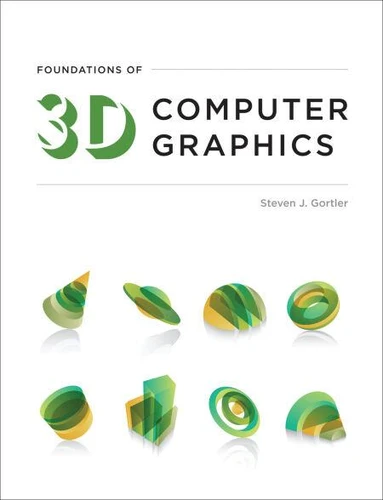Foundations of 3D Computer Graphics
Par :Formats :
Disponible dans votre compte client Decitre ou Furet du Nord dès validation de votre commande. Le format ePub protégé est :
- Compatible avec une lecture sur My Vivlio (smartphone, tablette, ordinateur)
- Compatible avec une lecture sur liseuses Vivlio
- Pour les liseuses autres que Vivlio, vous devez utiliser le logiciel Adobe Digital Edition. Non compatible avec la lecture sur les liseuses Kindle, Remarkable et Sony
- Non compatible avec un achat hors France métropolitaine
 , qui est-ce ?
, qui est-ce ?Notre partenaire de plateforme de lecture numérique où vous retrouverez l'ensemble de vos ebooks gratuitement
Pour en savoir plus sur nos ebooks, consultez notre aide en ligne ici
- Nombre de pages296
- FormatePub
- ISBN978-0-262-30481-8
- EAN9780262304818
- Date de parution13/07/2012
- Protection num.Adobe DRM
- Taille44 Mo
- Infos supplémentairesepub
- ÉditeurThe MIT Press
Résumé
An introduction to the basic concepts of 3D computer graphics that offers a careful mathematical exposition within a modern computer graphics application programming interface. Computer graphics technology is an amazing success story. Today, all of our PCs are capable of producing high-quality computer-generated images, mostly in the form of video games and virtual-life environments; every summer blockbuster movie includes jaw-dropping computer generated special effects.
This book explains the fundamental concepts of 3D computer graphics. It introduces the basic algorithmic technology needed to produce 3D computer graphics, and covers such topics as understanding and manipulating 3D geometric transformations, camera transformations, the image-rendering process, and materials and texture mapping. It also touches on advanced topics including color representations, light simulation, dealing with geometric representations, and producing animated computer graphics.
The book takes special care to develop an original exposition that is accessible and concise but also offers a clear explanation of the more difficult and subtle mathematical issues. The topics are organized around a modern shader-based version of OpenGL, a widely used computer graphics application programming interface that provides a real-time "rasterization-based" rendering environment. Each chapter concludes with exercises.
The book is suitable for a rigorous one-semester introductory course in computer graphics for upper-level undergraduates or as a professional reference. Readers should be moderately competent programmers and have had some experience with linear algebra. After mastering the material presented, they will be on the path to expertise in an exciting and challenging field.
This book explains the fundamental concepts of 3D computer graphics. It introduces the basic algorithmic technology needed to produce 3D computer graphics, and covers such topics as understanding and manipulating 3D geometric transformations, camera transformations, the image-rendering process, and materials and texture mapping. It also touches on advanced topics including color representations, light simulation, dealing with geometric representations, and producing animated computer graphics.
The book takes special care to develop an original exposition that is accessible and concise but also offers a clear explanation of the more difficult and subtle mathematical issues. The topics are organized around a modern shader-based version of OpenGL, a widely used computer graphics application programming interface that provides a real-time "rasterization-based" rendering environment. Each chapter concludes with exercises.
The book is suitable for a rigorous one-semester introductory course in computer graphics for upper-level undergraduates or as a professional reference. Readers should be moderately competent programmers and have had some experience with linear algebra. After mastering the material presented, they will be on the path to expertise in an exciting and challenging field.
An introduction to the basic concepts of 3D computer graphics that offers a careful mathematical exposition within a modern computer graphics application programming interface. Computer graphics technology is an amazing success story. Today, all of our PCs are capable of producing high-quality computer-generated images, mostly in the form of video games and virtual-life environments; every summer blockbuster movie includes jaw-dropping computer generated special effects.
This book explains the fundamental concepts of 3D computer graphics. It introduces the basic algorithmic technology needed to produce 3D computer graphics, and covers such topics as understanding and manipulating 3D geometric transformations, camera transformations, the image-rendering process, and materials and texture mapping. It also touches on advanced topics including color representations, light simulation, dealing with geometric representations, and producing animated computer graphics.
The book takes special care to develop an original exposition that is accessible and concise but also offers a clear explanation of the more difficult and subtle mathematical issues. The topics are organized around a modern shader-based version of OpenGL, a widely used computer graphics application programming interface that provides a real-time "rasterization-based" rendering environment. Each chapter concludes with exercises.
The book is suitable for a rigorous one-semester introductory course in computer graphics for upper-level undergraduates or as a professional reference. Readers should be moderately competent programmers and have had some experience with linear algebra. After mastering the material presented, they will be on the path to expertise in an exciting and challenging field.
This book explains the fundamental concepts of 3D computer graphics. It introduces the basic algorithmic technology needed to produce 3D computer graphics, and covers such topics as understanding and manipulating 3D geometric transformations, camera transformations, the image-rendering process, and materials and texture mapping. It also touches on advanced topics including color representations, light simulation, dealing with geometric representations, and producing animated computer graphics.
The book takes special care to develop an original exposition that is accessible and concise but also offers a clear explanation of the more difficult and subtle mathematical issues. The topics are organized around a modern shader-based version of OpenGL, a widely used computer graphics application programming interface that provides a real-time "rasterization-based" rendering environment. Each chapter concludes with exercises.
The book is suitable for a rigorous one-semester introductory course in computer graphics for upper-level undergraduates or as a professional reference. Readers should be moderately competent programmers and have had some experience with linear algebra. After mastering the material presented, they will be on the path to expertise in an exciting and challenging field.



